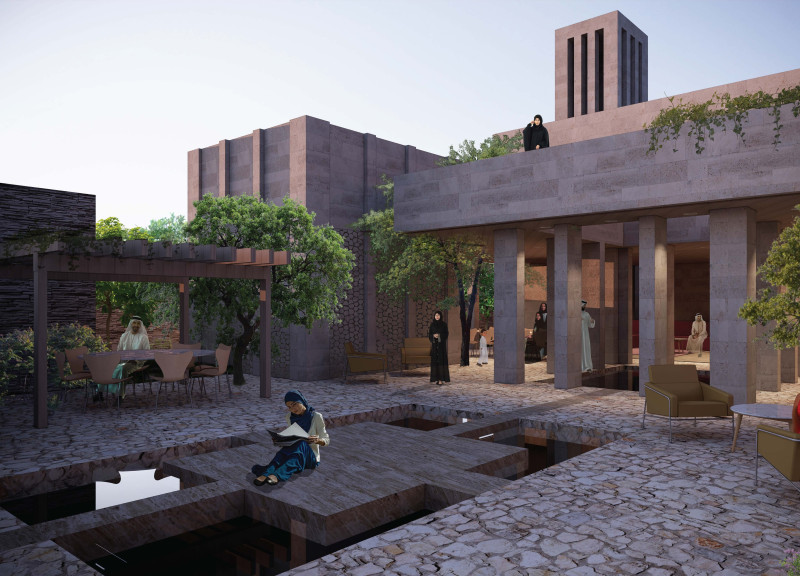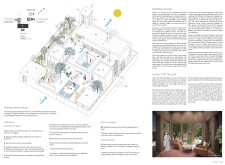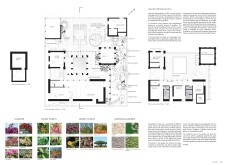5 key facts about this project
### Overview
House A is located in the United Arab Emirates and embodies a commitment to sustainable architecture while honoring the cultural heritage of the region. It integrates traditional design elements with contemporary architectural practices to address the environmental challenges presented by the desert climate. The project is organized around a central courtyard, which facilitates natural ventilation and shade, enhancing both community interaction and individual privacy.
### Spatial Strategy and User Interaction
The design is grounded in the principles of traditional courtyard housing, offering a solution that addresses the needs of modern living. A key feature is the 'living garden,' which not only enhances the aesthetic but also serves as a functional outdoor space that encourages biodiversity. The layout promotes a blend of indoor and outdoor activities, creating environments conducive to both social interaction and personal reflection. This arrangement supports the cultural practices of family and communal life, adhering closely to the values prevalent in Emirati society.
### Material Selection and Sustainability
The material choices in House A reflect a thorough consideration of local traditions and sustainable practices. Local limestone is utilized for cladding, providing durability and effective thermal regulation. Sustainably sourced timber contributes to both structural integrity and aesthetic richness, while natural stone elements are strategically placed to enhance cooling. Insulation materials, including rigid insulation and vapor barriers, are incorporated to maintain comfortable indoor climates. The use of local materials serves to minimize the environmental footprint and foster a connection with the surrounding context.
In addition to its materiality, the building employs passive and active energy solutions. Its orientation is optimized to capture prevailing winds, thereby reducing reliance on mechanical cooling. Further sustainability practices include a rainwater collection system and greywater recycling for irrigation purposes, illustrating a comprehensive water management strategy designed to support the landscape while promoting ecological responsibility.





















































